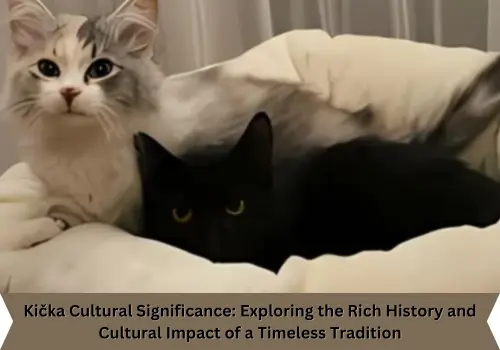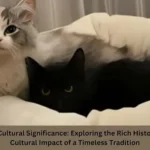Discover the rich history and cultural significance of Kička. Explore how this timeless tradition has influenced art and society through the ages.
Kička Cultural Significance: Exploring the Rich History and Cultural Impact of a Timeless Tradition-
Introduction
Kička, a term that resonates with cultural richness and artistic essence, has evolved significantly over time. This concept, deeply rooted in tradition, has found its place in modern expressions, influencing various forms of art and culture. In this blog, we will explore the historical roots of Kička, its cultural significance, and its impact on contemporary art and society.
Historical Roots
The origins of Kička can be traced back to ancient traditions where it played a pivotal role in rituals and societal norms. Historically, Kička was often associated with ceremonial practices, symbolizing various aspects of life and spirituality. Over the centuries, Kička has adapted to contemporary contexts, carrying the weight of history while embracing modern interpretations.
In many cultures, Kička was used in traditional attire, decorations, and artifacts. These items were not only aesthetically pleasing but also held deep symbolic meanings. For instance, in some Eastern European cultures, Kička was an integral part of wedding ceremonies, representing prosperity and fertility.
Historical Examples
- Eastern European Weddings: In countries like Slovakia and Poland, Kička was prominently featured in traditional wedding attire. Brides would wear intricately designed headpieces and garments adorned with Kička patterns, symbolizing purity and prosperity. These designs often included floral motifs and vibrant colors, reflecting the joyous nature of the occasion.
- Japanese Festivals: In Japan, Kička-like elements can be seen in traditional festivals such as the Gion Matsuri in Kyoto. During this festival, participants wear elaborate costumes and carry beautifully decorated floats, showcasing intricate designs that have been passed down through generations. These designs often incorporate elements of nature, such as cherry blossoms and waves, symbolizing the harmony between humans and nature.
- Middle Eastern Ceremonies: In Middle Eastern cultures, Kička-like patterns are often found in traditional textiles and carpets. These designs, characterized by geometric shapes and intricate detailing, are used in various ceremonies and celebrations. For example, Persian carpets, known for their elaborate patterns and rich colors, are often used in weddings and other significant events, symbolizing wealth and status.
- African Tribal Art: In many African tribes, Kička-like designs are used in body art and ceremonial masks. These patterns, often created using natural dyes and materials, hold significant cultural and spiritual meanings. For instance, the Maasai tribe in Kenya uses intricate beadwork in their traditional attire, each color and pattern representing different aspects of their culture and beliefs.
Cultural Significance
Kička’s cultural significance is profound, reflecting the deep intertwining of tradition and modernity. It has shaped art, rituals, and societal norms across various societies. In contemporary art, Kička continues to inspire and fuel the imagination of today’s artists, from paintings and sculptures to digital and performance art.
In modern times, Kička has transcended its traditional boundaries and found new expressions in various art forms. Artists incorporate elements of Kička into their works to evoke a sense of nostalgia and cultural identity. This blend of old and new creates a unique fusion that resonates with audiences worldwide.
Kička in the Digital Age
In the digital realm, Kička finds new avenues for expression, seamlessly integrating with technology to create a unique fusion that speaks to the heart of the modern creative landscape. Digital artists use Kička-inspired motifs and patterns in their works, creating visually stunning pieces that pay homage to traditional art forms while embracing contemporary aesthetics.
The digital age has also allowed for the preservation and dissemination of Kička. Online platforms and social media have made it easier for artists and enthusiasts to share their Kička-inspired creations with a global audience. This has led to a resurgence of interest in traditional art forms and their modern adaptations.
Benefits of Embracing Kička
- Enhancing Emotional Well-being: Incorporating Kička into life can have positive effects on emotional well-being, offering visual and immersive experiences that uplift and rejuvenate. The intricate designs and vibrant colors of Kička can evoke feelings of joy and tranquility.
- Fostering Creativity and Innovation: Embracing Kička can stimulate creativity, breaking down barriers and inspiring innovative thinking. Artists who draw inspiration from Kička often find new ways to express their ideas and push the boundaries of their craft.
Conclusion
Kička’s journey from its historical roots to its contemporary significance highlights its enduring impact on culture and art. As it continues to evolve, Kička remains a powerful symbol of the fusion between tradition and modernity. Its ability to adapt and inspire across generations ensures that Kička will continue to be a vital part of our cultural heritage.
FAQs:
1. What is Kička and where does it originate from?
Kička is a term that refers to intricate and culturally significant designs used in various traditional art forms. Its origins can be traced back to ancient traditions in Eastern Europe, Japan, the Middle East, and Africa, where it played a pivotal role in rituals and societal norms.
2. How has Kička influenced contemporary art?
Kička has significantly influenced contemporary art by providing a rich source of inspiration for modern artists. Elements of Kička are often incorporated into paintings, sculptures, digital art, and performance art, creating a unique fusion of traditional and modern aesthetics.
3. What are some historical examples of Kička in traditional ceremonies?
Historical examples of Kička include its use in Eastern European wedding attire, Japanese festival costumes, Middle Eastern textiles and carpets, and African tribal art. These designs often symbolize various cultural and spiritual meanings, such as prosperity, purity, and harmony with nature.
4. How is Kička being preserved and shared in the digital age? In the digital age, Kička is being preserved and shared through online platforms and social media. Digital artists create Kička-inspired works, and enthusiasts share these creations globally, leading to a resurgence of interest in traditional art forms and their modern adaptations.
5. What are the benefits of incorporating Kička into modern life?
Incorporating Kička into modern life can enhance emotional well-being by providing visually uplifting and immersive experiences. It also fosters creativity and innovation, as artists and individuals draw inspiration from Kička’s intricate designs and vibrant colors to express their ideas and push creative boundaries.
“For an intimate look into the life and legacy of [Famous Individual’s], subscribe to our portal. Explore the captivating stories that have shaped [his/her] journey and follow the unfolding chapters of [his/her] remarkable life. Delve deeper into the experiences that define [his/her] impact on the world. For exclusive updates and insights, connect with us on Instagram. Click [here] to stay connected and be a part of the extraordinary narrative that is [Famous Individual’s Name]. Also you can visit our another website which includes cricket latest news [click here].”






